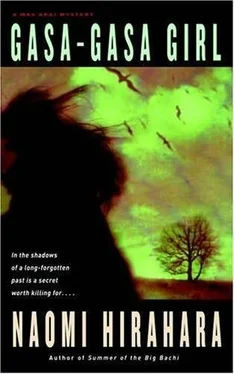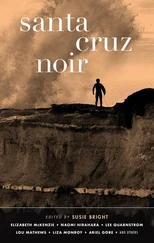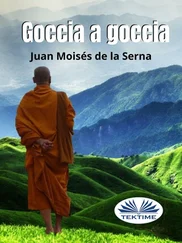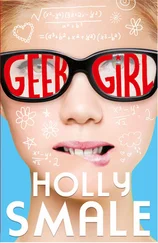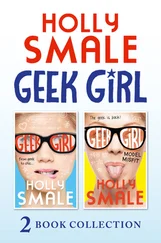“So whatsu the Mystery Gardenia?” asked Mas, hoping for a short explanation.
“You knowsu Kanda Nursery? Only gardenia grower in Market. Roses, carnation, they all come from Latin America, yo, but gardenia plants, they have mushi, whatchacallit, worms in soil. No out-of-country gardenia allowed. So Kanda doin’ good.”
Mas knew about the nematodes, wormlike parasites that could burrow near the roots of gardenia plants. The greenhouses of Kanda Nursery must be either north in Ventura County or south in Orange County, he thought.
“Well, anyways, I go ova to Kanda’s stall and talk to the son. Good thing I brought ova donuts one day at the Market. He rememba and then make time for me. I tell themsu they gotsu the biggest gardenias I ever seen. He tell me about their special Mystery Gardenia. Thatsu whatchu call dat type, you knowsu, Mystery Gardenia. Ship all ova the country, I think. I tellsu them about the gardenia you lookin’ for. ‘No way,’ he say. ‘No way you can find who grow dat flower.’ But I tellsu him how big and beautiful you say it was. So I guess heezu gotsu some hokori.”
Mas knew that if you complimented a man on what he grew or made with his hands, you had a friend for life. Although Haruo didn’t have a lot of common sense, unlike Mas, he had smarts on how to get along with people.
“Then he tellsu me, ‘You go with my dad to ranch.’ The father turns out to be Kibei, Mas, just like us. Name Danjo. Skinny guy, as skinny as a broom. But mouth, okii, so big thatsu you could sweep a whole day’s worth of leaves in there. Born in Riverside, but spent time in Tottori.”
“Yah, yah,” Mas said impatiently. He didn’t have time to hear Danjo Kanda’s life story.
“Anyhowsu, the nursery in San Juan Capistrano. You knowsu, the place where the birds come.” Mas had heard that swallows were supposed to visit the quaint town every spring. He didn’t know if the story was fact or fiction, but he wasn’t surprised to hear that Haruo had been charmed with the idea of a cloud of swallows descending on the town’s old mission every March.
“I tellsu you, datsu a nice place. Cool. Not far from ocean. I’m thinkin’, when I retire, I should move to dis place,” said Haruo, knowing full well that retirement would never be in the cards for either him or Mas.
“So I get out of truck and see greenhouse, four of them, plastic, all lined up. I tellsu you, Mas, smellsu so good, like a ladies’ cologne. Then when I go in, smell like wax. Danjo’s wife doing hand tailorin’, you knowsu, put flower in wax, then cold water.
“I go ova, take a closer look. I rememba whatchu say about flower, hair in the middle. Then I checksu what she doin’, and then I shout out, ‘Thatsu it, thatsu it.’ I solve Mas’s mystery.”
Haruo took a deep breath and then spoke so loud that even Tug and the two girls could hear. “They use shuji brush for the wax. Hand tailorin’. Those brushes gotsu animal hair, Mas. You get me?”
Mas nodded. He was familiar with hand tailoring, as he had some friends up in Mountain View, not far from San Francisco, who were in the flower nursery business. Apparently the pollen from the gardenia flowers got on ladies’ fancy dresses, so they dipped the half-open flowers in warm wax to seal the pollen. But Mas remembered seeing it done by hand, no brushes.
“And they gotsu New York customers,” said Haruo, who proceeded to read off a list of five flower shops in Manhattan and Brooklyn. The effort Haruo expended to recite his story had taken its toll. Afterward, he seemed to deflate like a punctured balloon, and weakly excused himself to finish out his sleep.
“What’s shuji?” Mari asked after Mas hung up the phone.
“You know, Japanese calligraphy. Didn’t you take it in Japanese school?” Joy took the end of her pink braid and mimicked a brushstroke on the kitchen counter.
“Must have missed that session.”
As a teenager, Mari regularly ditched her Saturday language classes, opting instead to smoke cigarettes three blocks away on a corner of Koreatown. Mas had seen her one Saturday on his way to a customer in Hancock Park.
“What’s this about the animal hair?” asked Tug.
Mas explained Detective Ghigo’s identification of the deer hair on the gardenia flower.
“Makes sense,” agreed Joy. “Those Japanese calligraphy brushes are usually made of deer hair. Some use goat, horse, or even raccoon. But your regular Western brush is either synthetic or made of hog or sable hair.”
Mari laughed. “Wow, you belong on Jeopardy!, girl.”
“Well, brushes, they’re my tools of the trade now. Anyway, you’re the one who went to Japanese school for thirteen years. You should know all that cultural stuff and at least a thousand kanji, right? In my measly two-year experience, I barely got through katakana and hiragana.”
In Japanese, there are three levels of writing: two phonetic versions, katakana and hiragana, and then the highest level, kanji, modern-day hieroglyphics. All three types could be traced back to the Chinese.
Mas had no trouble remembering katakana and hiragana -there were only about forty symbols in each-but kanji, numbering in the tens of thousands, was another matter altogether. Over the years, Japan had simplified kanji, but Mas was actually more at home with the complicated versions issued during the Meiji Era in the late 1800s. Kanji after kanji had been drilled into Mas’s head by a fierce junior high schoolteacher until school was eventually canceled during World War II. Mas sometimes felt that he belonged more to the era of Meiji, “Enlightened Rule,” than today’s era, Heisei, or “Peace Everywhere.”
Joy, the daughter of two Nisei, had probably felt like a fish out of water during her two years of Japanese school. Most of the students during Mari and Joy’s time had at least one parent direct from Japan. To hear words built from the sounds a, i, u, e, o would be as natural as drinking water to them. But there apparently was a price to be paid for knowing Japanese so well. To be American, Mari told Mas one time, meant that you knew only one language: English.
“I was jealous of you,” Mari said to Joy. “Lucky girl, that’s what I was thinking. You could go to sleepovers and watch Saturday-morning cartoons like the rest of the kids. No one would think of you as an FOB.” FOB, Mari had used that term a lot in high school, Mas remembered. Now, what did it mean? Fresh Off the Boat, Asian immigrants like Chizuko and other so-called newcomers.
“But now, see,” Joy argued. “‘Made in Japan ’ is cool. Video games, manga, everyone is getting into it.”
“That’s what Lloyd says, too. But he doesn’t understand that it wasn’t cool when we were growing up.”
“Well, he’s a white guy. What do you expect? They can go crazy for geisha and samurai, but it ain’t gonna change the color of their skin.”
“Joy-” Tug called out sternly.
Mari sat frozen, her mouth partially open, her tea mug steaming in her hands. Even Mas was surprised by Joy’s harsh tone.
“I’m sorry,” Joy said. “You know I’m just teasing you.”
A friendship that went back to preschool obviously counted for something, because Mari shrugged her shoulders. “Just wait until you get serious with someone, Joy,” Mari said. “I’m going to give you such a hard time.”
Joy exchanged a look with her father and retreated like a hermit crab into its shell at low tide. Mas didn’t understand what was going on with Tug, Joy, or Lil, for that matter. Tug had explained that Lil couldn’t come to New York City because she had to babysit their son Joe’s children. But the grandchildren had never stopped Tug and Lil from traveling together to Mount Rushmore and Branson, Missouri. Why, all of a sudden, would it prevent Lil from coming to the East Coast?
Читать дальше
